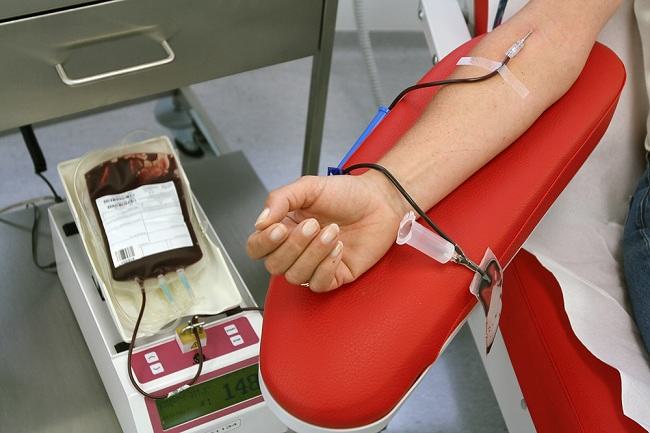Count Complete blood count is an examination to determine the complete number of blood cells. Its objectives include detecting disease, monitoring disease progression, and evaluating the effectiveness of treatment.
A complete blood count is performed by taking a blood sample, generally from a vein in the arm, to be examined in a laboratory to determine the number of components in the blood.

The following are the components of blood that are measured in a complete blood count:
- White blood cells, which fight infection
- Red blood cells, which carry oxygen from the lungs to the rest of the body
- Platelet cells (platelets), which play a role in the blood clotting process
- Hemoglobin, which is the oxygen carrier in red blood cells
- Hematocrit, which is the proportion of red blood cells in the blood
If the number of blood components is more or less than the normal value, it can be a sign of a health problem.
A complete blood count may also contain information about the average size of red blood cells (MCV), the amount of hemoglobin in each red blood cell (MCH), and the concentration or relative amount of hemoglobin in each red blood cell (MCHC).
Indication CountFull Blood
A complete blood count is part of a health check that is carried out regularly. Doctors usually recommend a complete blood count to:
- Seeing a person's overall health condition
- Diagnosing health problems in people who experience complaints or symptoms of a disease
- Monitoring disease progression in people who have been diagnosed with a disease
- Evaluating the effectiveness of treatment in patients undergoing therapy or medication
Warning Complete Blood Count
There are several things to know before undergoing a complete blood count, namely:
- The size of the veins of each person is different, as well as the size of the veins in one part of the body with other parts of the body. This can make the process of drawing blood difficult.
- Normal complete blood count results may differ for each patient, depending on age and gender.
- Abnormal complete blood count results do not always mean the patient has a particular disease. This is because the results of the examination can be influenced by the menstrual cycle, diet, medications, smoking habits, and pregnancy.
- While an abnormal blood cell count can be a sign of a medical condition, a diagnosis cannot be based solely on a complete blood count. For this reason, examination or other tests are needed to confirm the diagnosis.
Before CountFull Blood
Patients are usually not asked to fast before having a complete blood count. Patients will be advised to wear short sleeves to facilitate the blood collection process.
Procedure CountFull Blood
The complete blood count procedure only takes a few minutes. The following are the steps for a complete blood count procedure:
- Clean the skin area where the blood was drawn with alcohol or an antiseptic cleanser
- Tie an elastic rope on the upper arm so that the blood flow is blocked and the veins are filled with blood
- Insert a syringe into a vein, then draw the required amount of blood
- Release the elastic strap on the arm and cover the injection wound with a plaster to stop the bleeding
- Bring the blood sample that has been taken to the laboratory for further examination
After Count Full Blood
After taking the blood sample, the patient can carry on with his usual activities. The doctor will tell you the results of a complete blood count in a few hours or the next day.
The results of the patient's complete blood count will be compared with the normal size benchmark, according to age and gender. The following is a benchmark for normal complete blood count results in adult men and women in general:
| Types of blood cells | Blood cell count |
| White blood cell | 3400–9600/microliter |
| red blood cells | Men: 4.32–5.72 million/microliter |
| Women: 3.90–5.03 million/microliter | |
| Blood platelets | Men: 135,000–317,000/microliter |
| Women: 157,000–371,000/microliter | |
| Hemoglobin | Men: 13.2–16.6 grams/deciliter |
| Women: 11.6–15 grams/deciliter | |
| Hematocrit | Men: 38.3–48.6% |
| Women: 35.5–44.9% |
A complete blood count that is higher or lower than normal can be a sign of a problem in the patient's body, such as:
- Infection
- Inflammation
- Bleeding
- Anemia
- Iron deficiency
- Polycythemia vera
- Disorders of the bone marrow
- Immune system disorders
- Reaction to drugs
- Spleen enlargement
- Autoimmune disease
- Heart disease
- Cancer
Complete Blood Count Side Effects
Patients who undergo a complete blood count will only feel a little pain when the blood is taken. There may also be bruising at the puncture site for blood collection, but this will subside within a few days.
Although rare, blood sampling is also at risk of causing the following side effects:
- Hematoma, which is the absorption of blood under the skin
- Dizziness and feeling like fainting
- Bleeding
- Infection









